Summary
As part of the MEE group’s university outreach initiatives, HVIL has sponsored multiple year-long capstone design projects for the J. Mike Walker ’66 Department of Mechanical Engineering at Texas A&M University. Our subject matter experts provide problem statements and design parameters to a group of senior-level mechanical engineering students. Coordinating with these students, MEE personnel provides mentorship and design guidance as the team creates deliverables that meet real-world needs.
Target Heating Team (Fall 2021-Spring 2022)
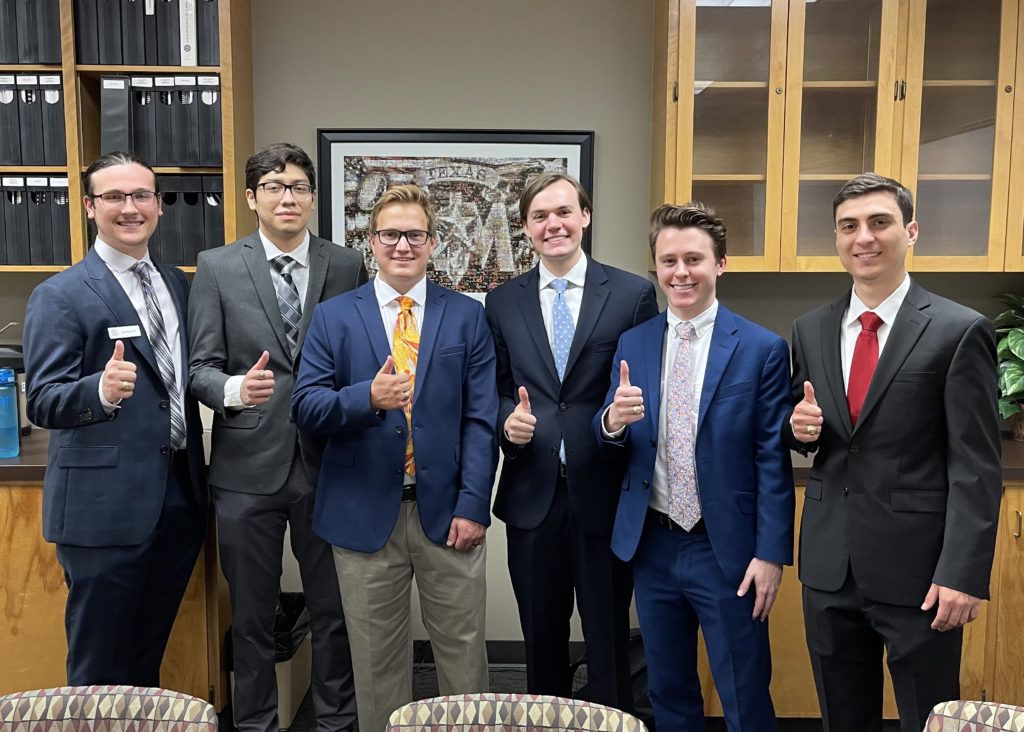
Personnel (from left to right): Liam Brown, German Gonzalez, Christopher Hogan, Mace Knight-Turcan, Cullen Petru, Diego Blancq-Cazaux
The goal of this project was to design and develop a cost-effective, yet robust, resistive or inductive target heating system. Such a system is needed to be easily utilized by the HVIL researchers on a regular basis to heat targets to temperatures exceeding 1500°C. The system was required to fit within the 2SLGG target tank and not only withstand the vacuum environment of the tank but also resist debris resulting from the HVI experiments. Final deliverables included a robust, cost-effective, resistive target heating system design capable of performing for full-scale HVI experiments.
Tessellated Structures Team (Fall 2021-Spring 2022)
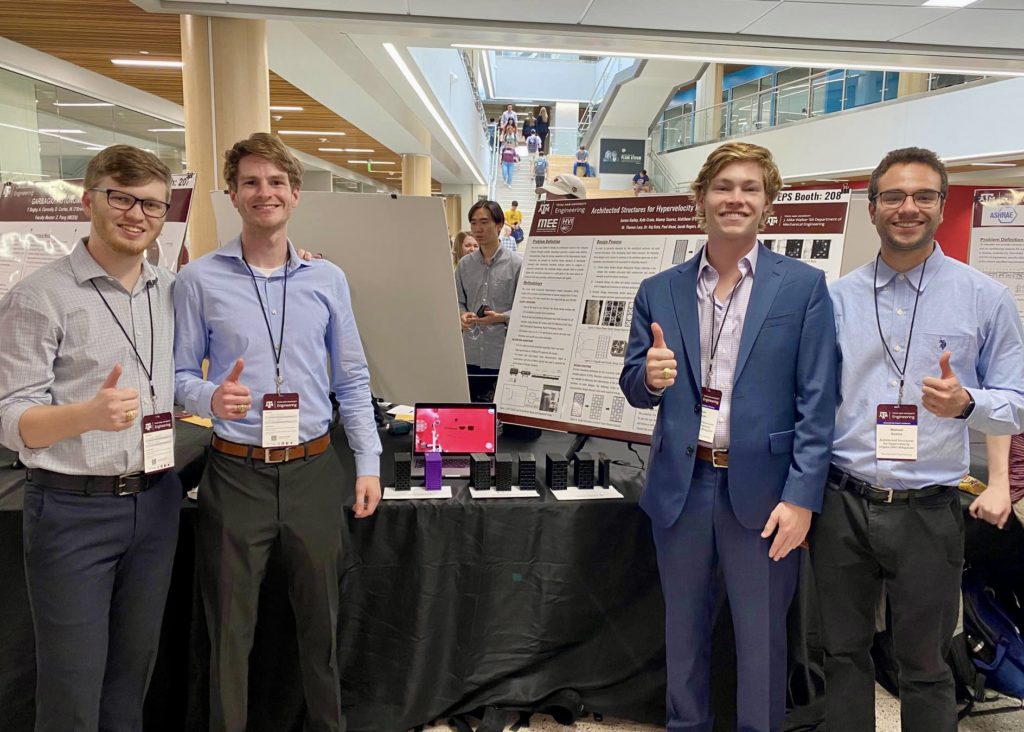
Personnel (from left to right): James Bailey, Matthew O’Brien, Kyle Crain, Manuel Suarez
The goal of this project was to develop tessellated structures using additive manufacturing methods which can offer protection against HVIs. As part of the project, the design team needed to develop a design process for such developing and selecting structures. Preliminary structures were tested at Texas A&M’s HVIL. Final deliverables included procedures for designing, developing, and fabricating tessellated structures, analysis of the structures, and promising prototypes for testing.
Piston Velocimetry Team (Fall 2021-Spring 2022)
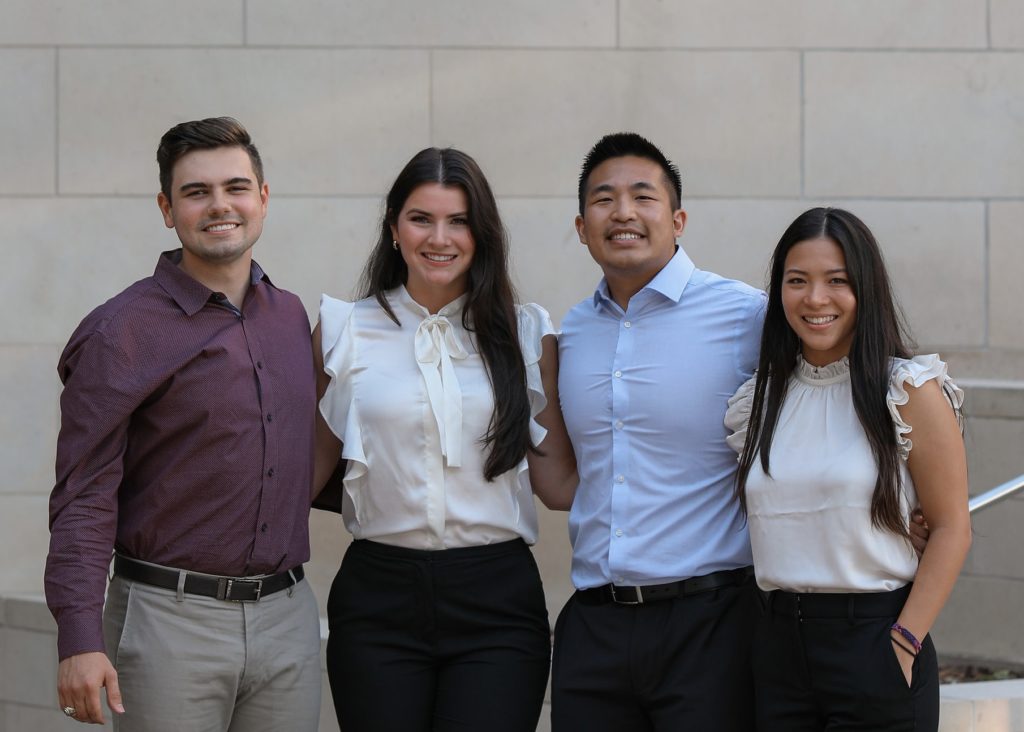
Personnel (from left to right): James Leaverton, Brynn Martin, Matthew Bui, Sarah Soliman (not pictured: John Rios, Nathan Franz, Colin Sanders)
The goal of this project was to develop a robust, user-friendly velocity measurement system for measuring in-bore compression piston velocities. Historically, magnetic coil-type measurement systems have shown promising results in terms of cost-effectiveness and reliability, but other options were considered as well. Final deliverables included an affordable, complete, and reliable system that HVIL researchers can use to measure the velocity of a compression piston.
FXR Fixture Team (Spring 2020-Fall 2020)
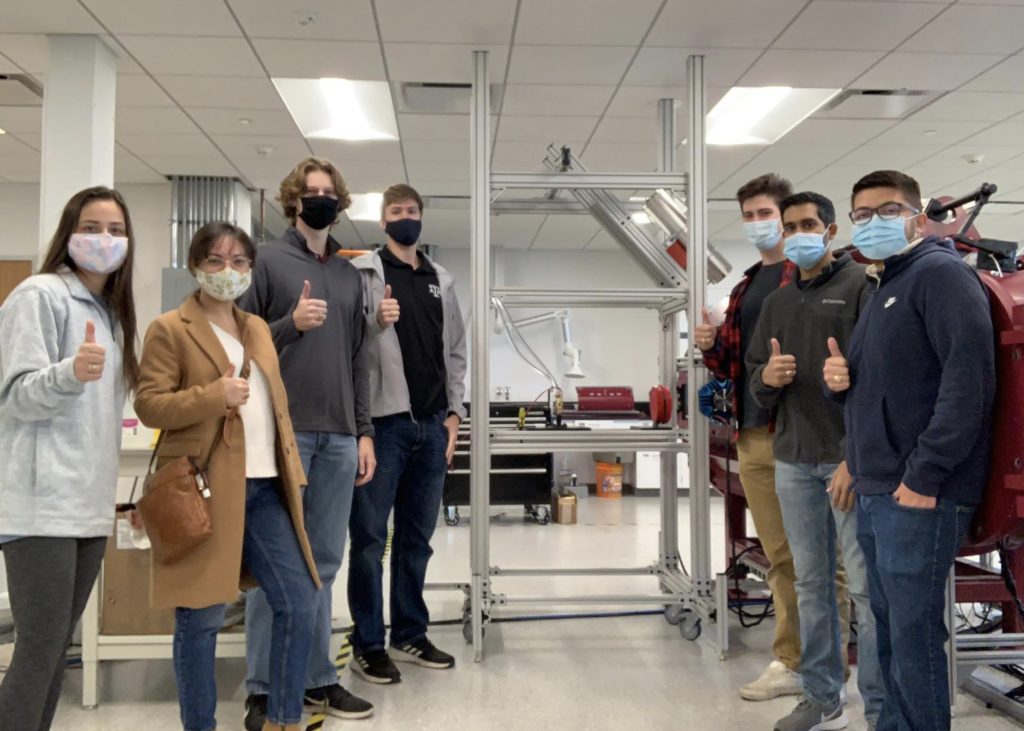
Personnel (from left to right): Gabriella Smith, Clara Schall, Austin Clark, Joseph Stricklin, Ian Rowatt, Shiv Gupta, Armando Montelongo
Initially, the MEE group submitted a problem statement detailing the need for a support structure for the flash X-ray (FXR) heads being installed at HVIL. Through design team input and iterative design improvements, the final FXR fixture was much more robust and multifunctional, supporting not only the FXR heads but the laboratory’s ultra-high-speed camera and supporting videography accessories. The fixtures were designed to be highly modular and mobile to improve access to the supported equipment and two stage light-gas gun for both operation and maintenance. On the whole, the design team excelled at their objectives and provided a system which provides nearly unlimited customization and adaptability for the ever-evolving research needs of the HVIL.
Target Fixture Team (Spring 2019-Fall 2019)
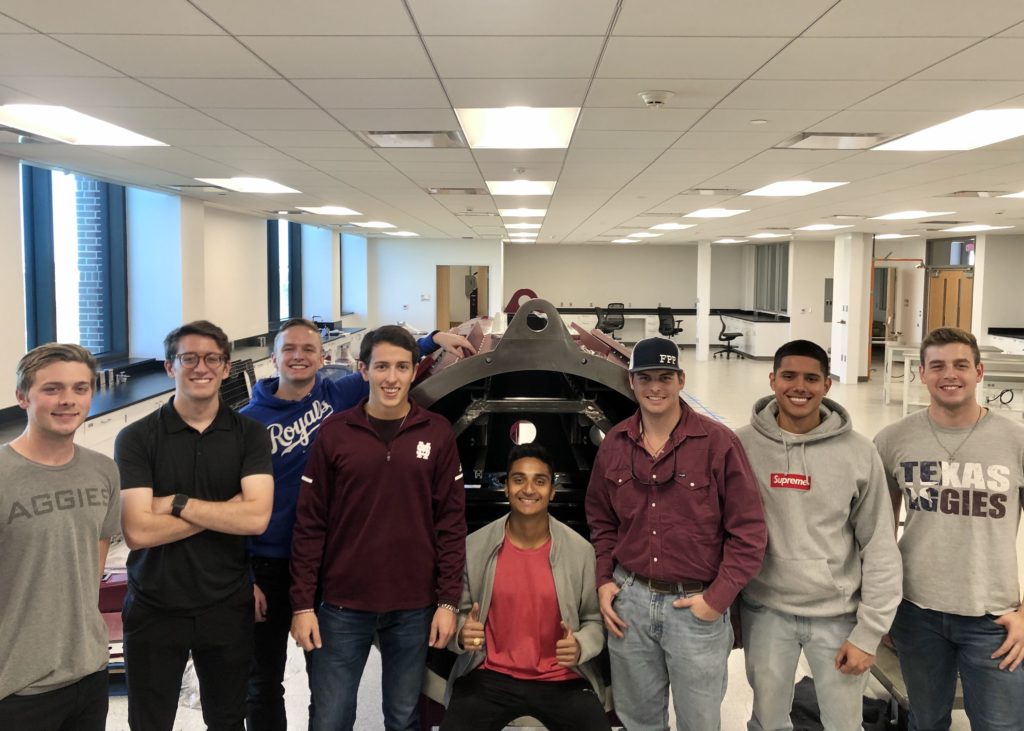
Personnel (from left to right): Jacob Nolan, Jacob Rogers*, James O’Neill, Paul Mead*, Harsha Mohan, Scott Huser, Luis DeLeon, Zach Gant*
At HVIL, target installation is critical to the validity of the data gathered. A design team was engaged to provide a target fixture that would rigidly fix targets of a range of geometries and materials in different orientations within the target tank in such a way that the fixture would not impinge on the ability of laboratory’s diagnostic equipment to record and analyze hypervelocity impacts. The final design met all of the design criteria and provided a structure which allowed HVIL personnel to quickly and effectively install targets for hypervelocity impact testing.
* denotes MEE personnel
